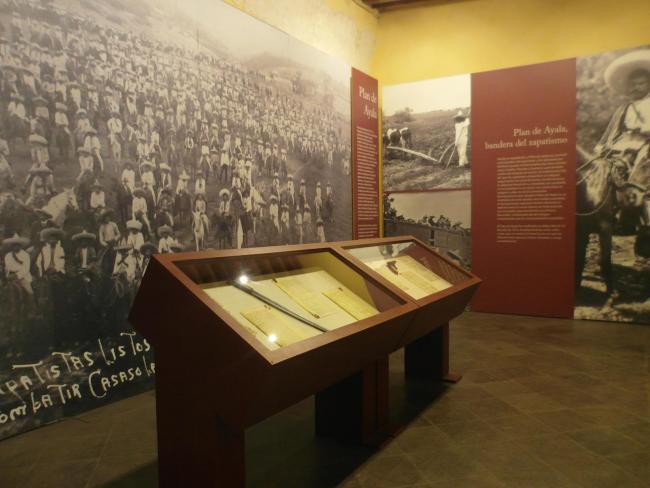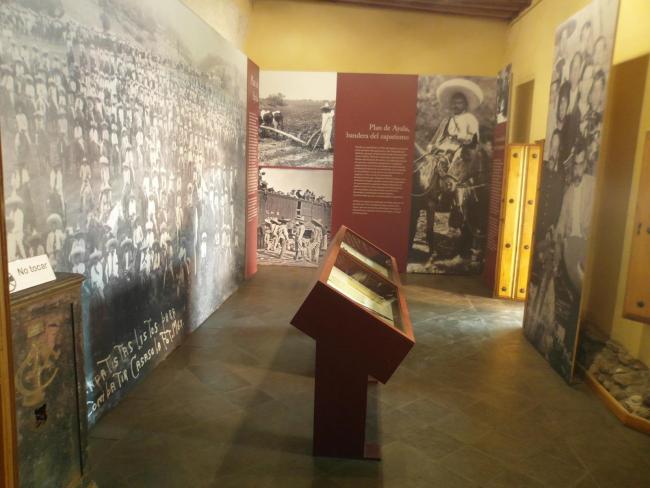
The Plan of Ayala, Banner of Zapatismo
Sala
This section highlights the peak of the movement.
Since its publication, the Plan of Ayala became the cornerstone of agrarian reform. It was drafted by Otilio Montaño, José Trinidad Ruiz, and Emiliano Zapata in the town of Ayoxuxtla (in the state of Puebla) and made public on November 28, 1911. The plan was embraced by revolutionary groups in other states such as Puebla, Tlaxcala, and Guerrero, where communities also suffered from land dispossession.
So central was the plan that Zapatistas insisted it be adopted "verbatim" in any negotiation with other revolutionary factions—"not a single comma" was to be changed. The Carrancistas rejected this condition, but the Revolutionary Convention did not. During that historic assembly, Zapatista delegate Paulino Martínez described the Plan as the new alliance between the Revolution and the people—a means of restoring the lands and freedoms stripped from them since the time of the Spanish conquest.
The Plan of Ayala was reaffirmed in Milpa Alta on July 19, 1914, and included a declaration that the struggle would not cease until agrarian reforms were enshrined in the Constitution.



